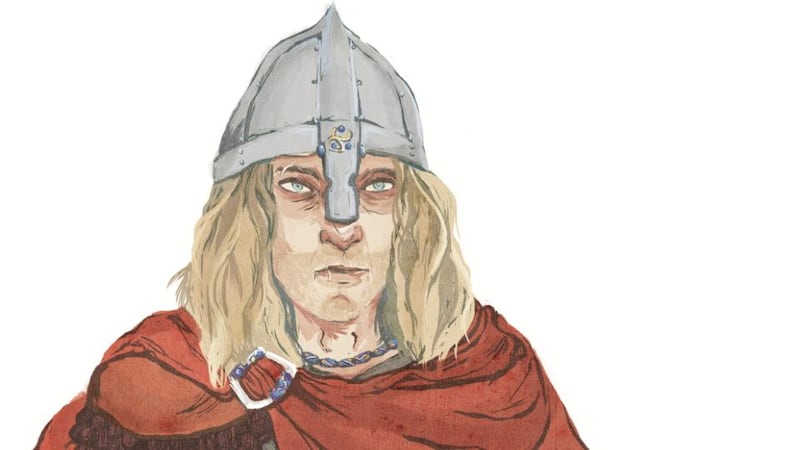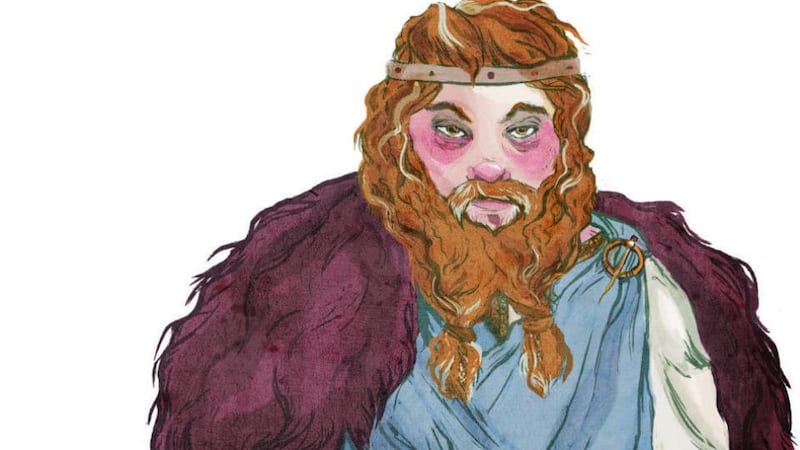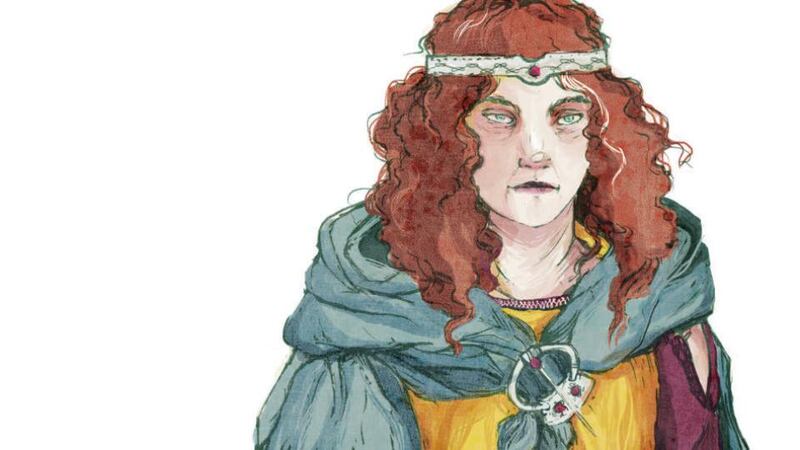BRIAN BORU (above)
High king of Ireland
Brian Boru was born about 941, one of the 12 sons of Cennétig (died 951), king of the Co Clare people called Dál Cais. He probably got his nickname from Béal Bóraimhe, his fort near Killaloe.
The earlier history of Dál Cais is obscure, but under Brian’s father and brother Mathgamain they blossomed rapidly.
By 982 Brian was beginning to flex his muscles outside Munster, and there followed years of wrangling for supremacy with the high king of Ireland, Máel Sechnaill mac Domnaill, of Ireland’s dominant dynasty, the Uí Néill.
Then, in 997, Brian sailed to Bleanphuttoge, on the shores of Lough Ree in Co Westmeath, and made a treaty with Máel Sechnaill. The latter abandoned the centuries-old Uí Néill claim to overlordship of the entire country, and they divided the island between them. This was the high point of Brian’s career to date.
Having defeated the Hiberno-Norse of Dublin at Gleann Máma, southwest of Dublin, in 999, Brian repudiated his agreement, and in 1002 he forced Máel Sechnail’s submission. In effect, Brian was now king of Ireland.
Year after year, Brian led campaigns north until, in 1011, his army forced the one remaining independent power, the king of Cenél Conaill in Donegal, to become his vassal. At this juncture Brian exercised a level of dominance throughout Ireland which no previous king had ever attained.
In 1013 a rebellion erupted led by Sitric Silkenbeard of Dublin and Máelmórda, king of Leinster. Renewed Danish attacks on England and Ireland suggested that Brian now faced a large-scale Scandinavian invasion.
This culminated in the Battle of Clontarf, on April 23rd, 1014 – Good Friday. His army won the day, although Brian was killed. After the battle the bodies of Brian and of his son Murchad were brought to Armagh for burial.
He was succeeded by his son Donnchad (died 1064), then in turn by the latter’s more successful nephew, Tairdelbach (died 1086) and by the latter’s son, Muirchertach (died 1119), the family by then sporting with pride the surname Ua Briain (O’Brien).
SITRIC SILKENBEARD
King of Dublin

Sitric Silkenbeard was king of Dublin for nearly 50 years, between 989 and 1036. He was the son of King Amlaíb Cuarán of Dublin and York, and of the Leinster princess Gormlaith.
Gormlaith was later married briefly to Brian Boru. Sitric would go on to marry Sláine, Brian’s daughter from another marriage. In other words, Sitric’s wife was the daughter of his ex-stepfather.
His reign was a time of economic prosperity for Dublin, during which, around 997, Sitric introduced Ireland’s first coinage, with the inscription Sihtric Rex Dyflin (Sitric King of Dublin; below right).
He inherited his father’s political ambitions but was heavily defeated by Brian Boru at the battle of Gleann Máma, in 999, so had to submit to him. Brian then exploited Dublin’s economic, military and naval resources as he extended his domination throughout Ireland.
But Sitric was a reluctant vassal, and he eventually rebelled against Brian, in 1013, in alliance with the king of Leinster, Máelmórda, brother of Sitric’s mother, Gormlaith. That rebellion culminated in the Battle of Clontarf, at which Sitric was joined by contingents of Scandinavians from the Orkneys, Hebrides and, perhaps, Denmark.
One source has it that Sitric stayed inside Dublin’s battlements during the battle – and, sure enough, many of his kinsmen were killed, but Sitric survived to rule Dublin for more than two decades afterwards.
In 1028 he went on a pilgrimage to Rome, indicating how thoroughly Christian the Norse of Dublin now were, the shining legacy of which was Sitric’s founding of Christ Church shortly afterwards.
Ejected by the arrival of a rival Hiberno-Norse dynast in 1036, Sitric went into exile “across the sea” – possibly in Wales or the Isles – and died in 1042.
MÁEL SECHNAILL MAC DOMNAILL
Brian Boru’s predecessor and successor

Máel Sechnaill mac Domnaill was Brian Boru’s immediate predecessor as high king of Ireland. He lived at Lough Ennell, in Co Westmeath, and was the last great king of his line, the branch of the illustrious Uí Néill dynasty called Clann Cholmáin. He was also the last of the “old style” kings of Tara, who claimed to be high kings of all Ireland.
Máel Sechnaill became king of Mide (Meath and Westmeath) in 978 and two years later king of Tara – that is, overking of all the Uí Néill who dominated the northern half of Ireland.
He defeated Amlaíb Cuarán, the ambitious Hiberno-Norse king of Dublin, at the Battle of Tara, in 980, and when the latter died, the following year, Máel Sechnaill seems to have married his widow, the Leinster princess Gormlaith.
All the signs were that he would go on to dominate Ireland, but he hadn’t reckoned on Brian’s emergence at that point. Máel Sechnaill spent years in a rearguard action, trying to prevent Brian’s rise – Brian even married Gormlaith, as if she were a trophy who passed as a sign of dominance from one to the other.
Máel Sechnaill compromised with Brian in 997, splitting power in Ireland between them both, but eventually, in 1002, he was compelled to submit to Brian as his overlord – a remarkable climbdown for a man with such blue blood compared with Brian’s comparative low rank.
Thereafter Máel Sechnaill remained faithful to his new superior. Later accounts claim he backed away from supporting Brian at Clontarf, but contemporary sources suggest otherwise. Because Brian was killed in the battle, however, Máel Sechnaill was able to reclaim the high kingship, which he held until his death, in 1022.
After that, though, his Clann Cholmáin dynasty continued its decline, never recovering its former glory.
GORMLAITH
Ambitious queen, Machiavellian schemer?

Gormlaith was the daughter of Murchad mac Finn, king of Leinster from 966 to 972, who was of the Uí Fáeláin dynasty ruling the Liffey Plain from Naas. Her brother Máelmórda was the Leinster king who fought against Brian Boru at Clontarf.
Gormlaith became infamous in literature at home and abroad as an ambitious and subversive queen. A poem describes her as taking “a leap at Dublin, a leap at Tara, a leap at Cashel”.
The leap at Dublin was her union with Amlaíb Cuarán, the Hiberno-Norse king of Dublin, by whom she bore Sitric Silkenbeard, king of Dublin at the Battle of Clontarf.
The “leap at Tara” is a supposed marriage to Máel Sechnaill mac Domnaill, the high king who defeated Amláib at the Battle of Tara, in 980, and who was in turn deposed by Brian Boru. And the leap at Cashel represents her marriage to Brian.
Gormlaith’s son by Brian, Donnchad, would go on to succeed him as king of Munster and claimant to the kingship of Ireland.
Both Irish and Scandinavian sources give Gormlaith a major role in instigating the Battle of Clontarf. The late 11th-century Cogadh Gáedhel re Gallaibh (The War of the Irish With the Vikings) depicts her as inciting her brother Máelmórda to rebel against her former husband Brian.
And the 13th-century Njáls Saga portrays the queen as a Machiavellian schemer, instructing her son Sitric to recruit the Viking leaders, Sigurd of Orkney and Bródar of Man, with the offer of marriage to her and a kingdom in Ireland if they did battle with Brian. It is a highly misogynistic portrayal: Gormlaith is the archetypal woman scorned, seeking vengeance on a former lover. What the real Gormlaith was like we cannot possibly say. We know she outlived all her husbands (the first of them by 50 years) and died in 1030.









